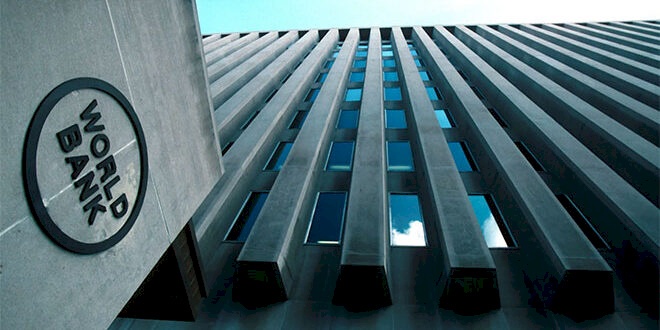
More Optimistic Predictions: The World Bank Raises Estimates for Growth in the Middle East in 2025
SadaNews - The World Bank has raised its growth forecasts for the region that includes the Middle East, North Africa, Afghanistan, and Pakistan for 2025, but has downgraded them for the upcoming year, attributing the adjustments to conflicts and declining oil production in Iran and Libya.
The Washington-based bank now expects the average GDP growth in the economies of the Middle East, North Africa, Afghanistan, and Pakistan to reach 2.8 percent this year, up from the 2.6 percent growth forecast published in April.
This improvement is attributed to better economic activity in Gulf countries following a faster-than-expected gradual lifting of oil production cuts, along with growth in the non-oil sector.
Oil-importing countries are also expected to experience economic improvement, driven by increased spending and private investments, in addition to a recovery in the agricultural and tourism sectors. In contrast, developing oil-exporting countries are expected to see significant slowdowns due to conflicts and declines in oil production.
However, the World Bank warned that risks remain due to global uncertainty caused by trade shifts, ongoing conflicts, and displacement.
The World Bank also lowered its GDP growth forecasts for the Middle East, North Africa, Afghanistan, and Pakistan in 2026 to 3.3 percent from 3.7 percent in the April projections.
The report, titled "Work and Women: Untapped Talents and Unachieved Growth," indicates that countries in the region can improve the lives of more people by harnessing the full potential of the workforce.
It is noteworthy that the capacities and potentials of women are still largely untapped in the region. Data show that only one in five women currently participates in the workforce - the lowest rate in the world - despite the significant progress women have made in education and skill acquisition.
Ousmane Diagana, World Bank Vice President for the Middle East, North Africa, Afghanistan, and Pakistan, said: "I call for decisive action beyond limited measures to unleash the full potential of women in the region, which requires addressing all barriers to their inclusion through comprehensive solutions. A vibrant and capable private sector that can create jobs and meet aspirations is key to true progress."
The report provides estimates of the potential gains that the region's economies could achieve if barriers to women’s full participation in the labor market were removed, based on analysis that includes family situations, social norms, laws, and the role of the private sector. No other region would benefit as much from lifting restrictions on women’s work.
Roberta Gatti, Chief Economist for the Middle East, North Africa, Afghanistan, and Pakistan at the World Bank, added: "Increased women’s participation in the labor market can yield significant economic gains." Removing barriers to women’s access to job opportunities could raise per capita GDP by between 20 to 30 percent in economies such as Egypt, Jordan, and Pakistan."
On the other hand, the World Bank expects the Iranian economy to contract by 1.7 percent this year and by 2.8 percent in 2026.

الشركات السعودية تعيد هيكلة إنفاقها وسط استمرار الزخم الاستثماري

China Continues to Lead the Global Scene in Base Metals

Global Coffee Prices Fall After Trump Cancels Tariffs on Brazil

Syria Officially Returns to the SWIFT System

Egypt buys 80 LNG shipments from US 'Hartree Partners' for 4 billion dollars

Gold price heading for slight weekly loss as interest rate cut chances fade

Slight Decline in Gold Prices with Rising Dollar
